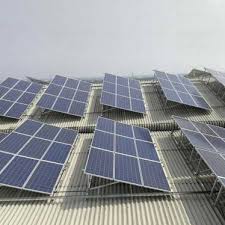Solar Panel Subsidy
Solar panel subsidies are designed to make the transition to renewable energy more affordable and accessible. Many individuals, organizations, and businesses can benefit from these subsidies, depending on local government programs and policies. Here’s a breakdown of who can typically benefit:
1. Homeowners:
Residential solar subsidies: Many countries and regions offer financial incentives to homeowners who install solar panels, including grants, tax credits, or rebates. This helps reduce the upfront cost of installation, making it easier for households to switch to solar energy.
Net metering: Some homeowners can also benefit from net metering policies, where they can sell excess electricity generated by their solar panels back to the grid, lowering their utility bills further.
2. Businesses and
Commercial Properties:
Commercial solar incentives: Businesses of all sizes can take advantage of subsidies and tax benefits to reduce the cost of installing solar panels on their commercial properties. These incentives can significantly lower operating costs by reducing electricity expenses.
Corporate social responsibility: Companies looking to boost their green credentials or meet sustainability goals can benefit from subsidies as they transition to renewable energy sources.
3. Non-Profit
Organizations and Schools:
Non-profit subsidies: Non-profit organizations, schools, and community institutions may also qualify for solar panel subsidies. These organizations often operate on tight budgets, and solar power can reduce their energy expenses, allowing more funds for their primary missions.
Educational benefits: Schools can benefit from both the cost savings and the educational value of using renewable energy, demonstrating sustainability practices to students.
4. Farmers and Rural
Communities:
Agricultural subsidies: Farmers and agricultural businesses can benefit from specific solar subsidies tailored to rural areas. Solar energy can be used for powering irrigation systems, barns, and processing equipment, making it a practical solution for reducing energy costs.
Off-grid systems: For rural communities that are not connected to the central electricity grid, solar power, supported by subsidies, can offer an affordable and reliable energy solution.
5. Low-Income
Households:
Targeted subsidy programs: Many governments offer specific subsidy programs aimed at low-income households to help them adopt solar energy. This can be in the form of grants, reduced-interest loans, or other financial support to make solar panels affordable.
Community solar projects: In some regions, low-income households may also benefit from community solar programs where solar energy is shared among a group of households, reducing costs for individual participants.
6. Municipalities and
Government Institutions:
Government solar programs: Local governments, municipalities, and public institutions often qualify for subsidies or grants to install solar panels on public buildings. This can help reduce energy costs for schools, libraries, and government offices while promoting sustainability at a community level.
How to Access Solar
Panel Subsidies:
Research local programs: Different countries, states, and municipalities offer various solar incentives. Homeowners and businesses should check with local government agencies or solar installers to learn about the specific subsidies available in their area.
Apply through certified solar providers: Many solar subsidy programs require working with approved or certified solar panel providers to ensure quality installation and adherence to local regulations.
In summary, solar panel subsidies can benefit a wide range of individuals and organizations, from homeowners and businesses to farmers and non-profits, making the shift to clean energy more financially accessible for all.

.jpg)


Comments
Post a Comment